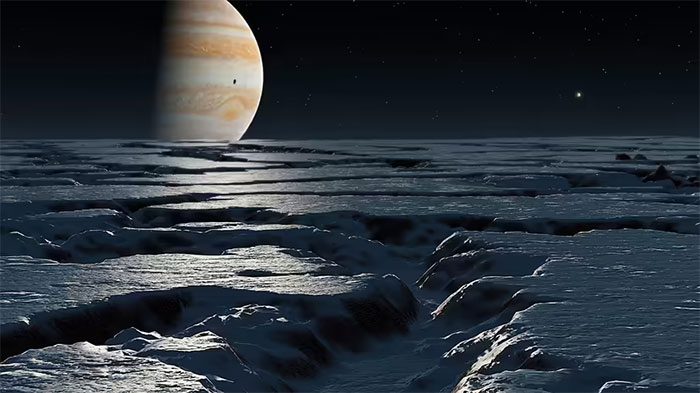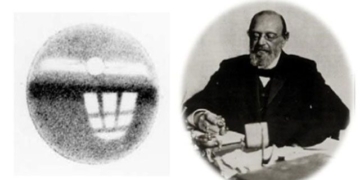New research strengthens the hope that in the coming years, NASA’s spacecraft will actually make contact with extraterrestrial life on the moon of Europa.
Comets have long been suspected to be one of the types of “life ships” that carried the first organic molecules to “seed” Earth. Now, a study from the University of Texas, California Institute of Technology, and Williams College (USA) suggests that similar “ships” may have reached Europa, as well as Enceladus and Titan.

Beneath the icy surface of Jupiter’s moon is a potential world of life – (Graphic from NASA).
Europa is one of the four largest moons of Jupiter, while Enceladus and Titan are two of Saturn’s moons. All these celestial bodies have shown evidence of possessing conditions that could support life similar to Earth, particularly in the subsurface oceans beneath their icy crusts.
According to Science Alert, these worlds are much farther from the Sun than Earth and lie outside the “habitable zone” – the region where celestial bodies are “bathed” in temperatures sufficient to maintain liquid water.
However, the vast data collected by NASA from these moons of Jupiter and Saturn indicates that their structures include a subsurface ocean kept warm by their large external ice shells and hydrothermal systems, similar to those found at the bottoms of Earth’s oceans – particularly resembling the hydrothermal systems in Antarctica and Hawaii.
Many Earth organisms have been found in the dark waters similar to those subsurface oceans, having evolved in unique ways to adapt.
The missing piece to confirm whether Europa or similar celestial bodies have life is the presence of oxidants. They exist, but are limited to the surface, created by the interaction of surface materials with solar radiation.
In this new study, the authors indicate that comets not only bring life but also contribute necessary oxidants to the subsurface oceans, as impacts would temporarily melt the surface ice. Clearly, the icy crusts of these worlds exhibit signs of impact.
To assess whether these impacts are sufficient to trigger the “seed of life” process, the authors conducted a mathematical simulation on Europa and determined that this is the most plausible way the planet would respond to impacts. 40% of the melted water during impacts would mix with the ocean.
Thus, Europa meets all the conditions to generate life similar to Earth. Perhaps the final thing we should consider is waiting for NASA’s Europa Clipper spacecraft, which will deploy a robotic probe beneath the ice to search for signs of life.
This new study has just been published in the scientific journal Geophysical Research Letters.


















































